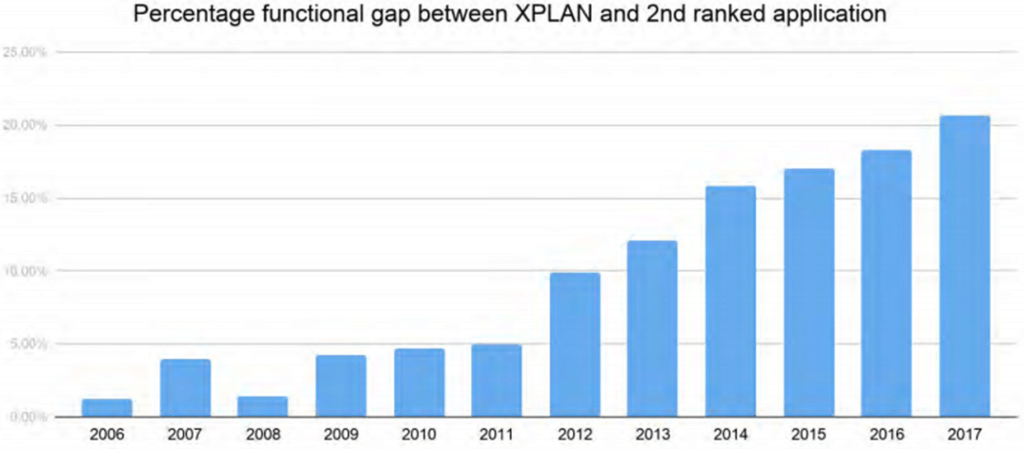When it comes to technology, there is typically a trade-off between capability and ease of use. Consider the competition between iPhone and Android over the years. iPhone typically leads the way for ease of use, Android typically leads the way for breadth of capability. (Come at me Apple lovers, I’ll argue that to the death.)
Whilst Financial Advice technology is no different conceptually, it’s a much bigger decision. This isn’t just a matter of whether you’re going to be able to Face Time for the next two years, this is a very significant business decision. Your primary software choice will likely have a bigger impact on your business than any other supplier bar your choice of licensee.
In this article we’ll cover:
- Beginning with the end in mind, and the importance of your future state when selecting software now.
- Barriers to success that ought to be considered.
- Two ends of the spectrum for the Australian advice software market; comparing two key providers, XPLAN vs AdviserLogic.
Begin with the end in mind
One analogy I find helpful is to think of this like you are building a spaceship. Your vision is your destination. The spaceship is the software that will get you there.
Want to go to the moon?
Wicked! You’re going to the moon! That’s a significant feat. You’re going to need something that can get to space, keep people alive up there, land and stuff. The best way to achieve that is with a relatively simple rocket. It’ll need a capsule, but doesn’t need to generate power or recycle anything. That’ll cost less to build, be easier to get going, and take less time to get there.
Want to go to Mars?
Wowza! Mars huh? Well, you’ll need all the things they needed for the Moon, and much more. If you have a ship ready for the Moon, you might as well chuck it out. You can’t upgrade that and get it to Mars. Your new ship is going to need to be able to have people living on it, have independent power and recycle everything. It’ll be able to get to the Moon as well, and even though that’ll take longer, it’ll go much further in the end.

My point being, select the simplest option that will still get you to your intended destination, as it will require less investment and get you there sooner.
What are the barriers to success?
Whatever your desired destination, there are several questions to consider before going down that road.
- Are you willing to do what it takes? Will you invest the time and money required to get there?
- Do you have the right systems engineer? Does your systems engineer (who likely wears many hats) have the capability and time to build the infrastructure required? Processes, templates, in-house training, and more will be required by your process lead. Are they able to make the most of the tool? If not, you may have to outsource that function (Call me maybe?) or set your sights lower and go with something easier out of the box.
- Can your team handle complexity? Powerful tools speed you up when you know how to use them. Datafeeds for example can make you more efficient and enable superior automated client reporting, but there’s no point in having them if your team can’t get their heads around setting them up.
A team can only move as quickly as it’s slowest member. Will you do what it takes to have a team that can deal with complexity? If you don’t have the right people for this journey in place this may require training, additional support (ie: associate adviser model), or even replacing team members who are unable/unwilling to adapt.
If you’re not able or willing to remove the barriers to success, then you will need to revise your intended destination. You may want to go to Mars, but perhaps you don’t have what it takes. In which case, you should focus on going to the Moon.
The two ends of the spectrum
Whilst that might be a useful analogy, it’s time to apply it to the Australian advice CRM space.
We can look to Investment Trends research to compare the two ends of the spectrum. Investment Trends’ Planner Software Benchmark Report includes results on both capability/functionality and ease of use/navigation.
XPLAN the clear winner on capability
If the Investment Trends research results over the years is anything to go by, XPLAN has led the pack year in, year out, for breadth of functionality.

AdviserLogic the clear winner on ease of use
On the flipside, if we take a look at AdviserLogic, they’ve won ‘Ease of Use/Navigation’ for the last six years.
A bit like the Apple to Android, it’s easy to see the trade off between ease of use and breadth of capability. Bringing this back to our analogy, AdviserLogic would get you to the Moon sooner, but XPLAN can take you all the way to Mars.
The choice for you
If you keep the end in mind, you’ll have a better idea of where you should be investing your efforts.

Of course, this is a simplistic view on one (albeit important metric). These are trade-offs on a spectrum with many factors, and this is not just a binary decision. XPLAN may not be the hardest to use software. AdviserLogic may not have the least functionality in the market. Midwinter’s AdviceOS, PractiFi, and others sit on this spectrum too.
We’d love to hear your thoughts and experiences with advice software and the tough choices involved in the comments below.

Leave a Reply